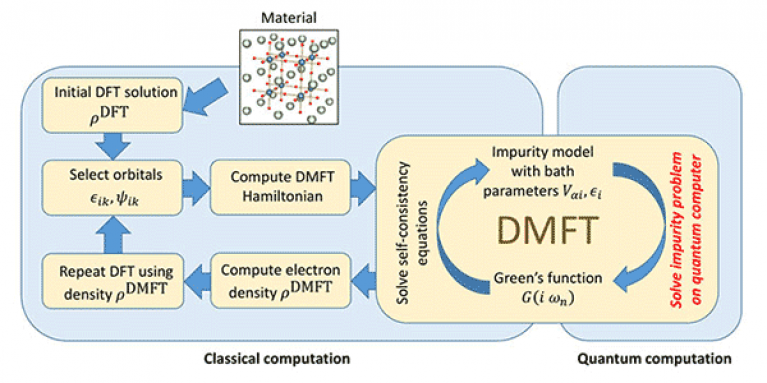
Recent improvements in the control of quantum systems make it seem feasible to finally build a quantum computer within a decade. While it has been shown that such a quantum computer can in principle solve certain small electronic structure problems and idealized model Hamiltonians, the highly relevant problem of directly solving a complex correlated material appears to require a prohibitive amount of resources. Researchers at Station Q Santa Barbara, QuArC and Station Q Zurich have shown that by using a hybrid quantum-classical algorithm that incorporates the power of a small quantum computer into a framework of classical embedding algorithms, the electronic structure of complex correlated materials can be efficiently tackled using a quantum computer.
